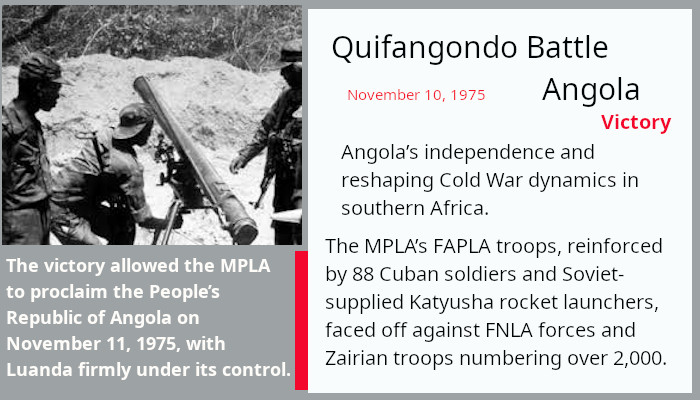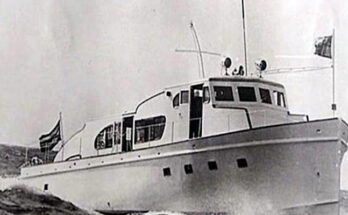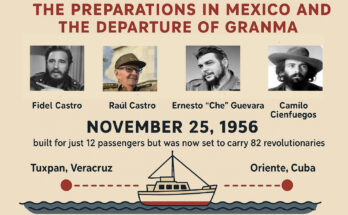The Battle of Quifangondo on November 10, 1975, marked a decisive victory for the MPLA and Cuba, sealing the fate of Angola’s independence and reshaping Cold War dynamics in southern Africa.
The Battle of Quifangondo—known in Kikongo as Nshila wa Lufu (“Path of Death”)—was more than a military clash; it was a geopolitical turning point. On the eve of Angola’s formal independence from Portugal, the MPLA (Movimento Popular de Libertação de Angola), backed by Cuban forces, repelled a major offensive by the FNLA (Frente Nacional de Libertação de Angola), which was supported by Zaire and South Africa.
This important battle took place on November 10, 1975, near the town of Quifangondo, just north of Luanda, the capital.
The MPLA’s FAPLA troops, reinforced by 88 Cuban soldiers and Soviet-supplied Katyusha rocket launchers, faced off against FNLA forces and Zairian troops numbering over 2,000
The FNLA’s advance was crushed in a matter of hours. The MPLA’s superior firepower and coordination, especially the use of Soviet Grad rocket artillery, decimated the attackers and halted their final attempt to seize Luanda before independence was declared.
The victory allowed the MPLA to proclaim the People’s Republic of Angola on November 11, 1975, with Luanda firmly under its control.
This battle marked the beginning of Cuba’s long military presence in Angola, part of Operation Carlota, a solidarity mission that would last until 1991.
Quifangondo became a flashpoint in the global Cold War, with the U.S. and apartheid South Africa backing the FNLA and UNITA, while the former Soviet Union and Cuba supported the MPLA.
The Battle of Quifangondo is remembered in Angola not only as a military triumph but as a foundational moment of national sovereignty. It demonstrated the power of international solidarity and the strategic importance of timing, as the MPLA’s control of Luanda at the moment of independence gave it diplomatic legitimacy.




